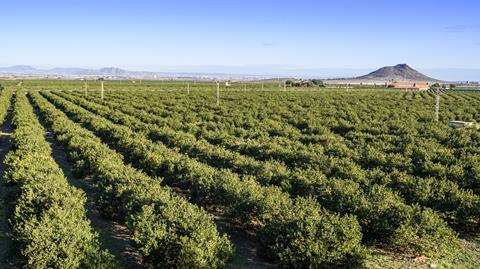Exports up in volume and value year-on-year
Spanish fruit and vegetable exports in 2024 grew by 8 per cent in volume and 5 per cent in value in 2024. The latest customs data, published by Fepex, shows that 12.3mn tonnes of produce worth more than €17.7bn was exported last year. Ninety-seven per cent of shipments were destined for the European Union.

A total of 5.7mn tonnes of fresh vegetables worth €8.044bn were exported, an increase of 10 per cent and 2 per cent respectively on the previous year. Pepper, cucumber and lettuce topped the table, pushing tomatoes into fourth place.
Pepper exports grew 13 per cent to 804,126 tonnes in volume and 3 per cent to €1.564bn in value; cucumber exports totalled 745,726 tonnes (+12 per cent) and €979mn (-2 per cent); lettuce exports reached 745,699 tonnes (+5.5 per cent) and €920mn (unchanged), and tomato exports grew 21 per cent in volume to 674,426 tonnes but fell 6 per cent in value to €1bn.
Overall exports of fresh fruit grew 7 per cent in volume to 6.6mn tonnes and 8 per cent in value to €9.658bn. In the stonefruit category, nectarines were up 13 per cent in volume and 11 per cent in value at 339,085 tonnes and €495mn, while flat peach exports grew 10 per cent in volume and 17 per cent in value to finish on 204,276 tonnes and €315mn.
Strawberry exports totalled 255,375 tonnes worth €788mn – and increase of 4 per cent in volume and 12.5 per cent in value. Watermelon exports also performed well, growing by 16 per cent in volume and 11 per cent in value to 789,733 tonnes and €552mn, making them the third most exported fruit after oranges and mandarins.
Fruit and vegetable imports in 2024 grew 6 per cent year-on-year to 4.4mn tonnes wotrh more than €5mn. Vegetable imports were up 15 per cent in volume and 12.5 per cent in value at 2.1mn tonnes and €1.587bn, while fruit imports totalled 2.2mn tonnes worth €3.414bn – a dip of 0.4 per cent and increase of 11 per cent respectively.
By destination, Europe was the top market, taking 11.9mn tonnes worth €17.171bn, an increase of 8 per cent in volume and 5 per cent in value compared to 2023.
“The data on fruit and vegetable foreign trade show that the EU continues to be the mainstay of the positive development of the sector, compared to third countries that only represent 3 per cent of exports, and with very limited growth possibilities, due to the protectionist policies based on phytosanitary barriers of some of these countries, such as the US, where Spain exported only 32,468 tonnes, or 0.2 per cent of the total,” Fepex said.
“Furthermore, the globalisation of the community market requires an ever-increasing investment effort to maintain competitiveness, which is why we are calling for an investment financing policy that is more in line with sectoral needs.”



